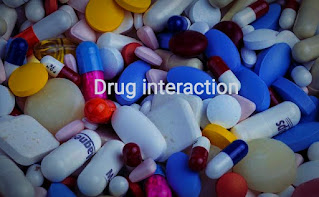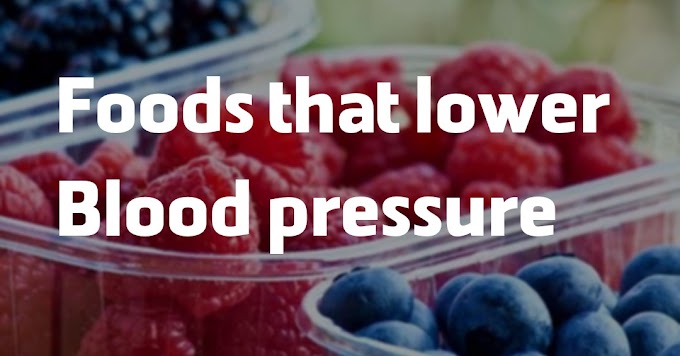Drug Interactions :
Drug interaction can be defined as alteration of of one drug by another drug when they are given simultaneously. Introduction of drugs can occur in- vitro or in-Vivo.
Drugs interaction :
1. In vitro (Out side the body )
2. In vivo ( Inside the body )
i. Pharmacokinetic interactions
ii. Pharmacodynamic interactions
1. In vitro (Out side the body )
2. In vivo ( Inside the body )
i. Pharmacokinetic interactions
ii. Pharmacodynamic interactions
Pharmacokinetic interactions:
1) Interactions during absorption:
There may be interaction of drugs in the gastro-intestinal tract which may result in either decreased or increased absorption. This Alteration of absorption may be due to one of the following reasons :
a)Direct chemical interaction between drugs: e.g. antacids containing aluminium, magnesium or
calcium form chelation with tetracycline and reduces the bioavailability of tetracycline
b) Altering gastro-intestinal motility: (e.g) drugs like metoclopramide, purgative accelerate gut
motility which leads to lesser stay of drugs in the gut. Thus bioavailabilty of many drugs is
decreased
-reduced gut motility of anti-cholinergics, anti-histaminics leads to longer stay of drugs in the
gut, thus bioavailability is increased.
c) Altering the flora of the gut : antimicrobials may potentiate oral anticoagulant by decreasing synthesis of vitamin K by the bacteria in the large gut.
2) Interaction during distribution:
a) Displacement from plasma protein binding sites: A drug that is extensively bound to protein can be displaced from its binding site by another drug that has greater affinity for the same binding site, thereby increasing the free form of the first drug in the plasma. This produces a rise in the effect of the drug and also increases the chances of toxic reactions.
b) Displacement from other tissue binding sites: A drug may also displace a drug from its tissue
binding site (e.g.) quinidine can displace tissue protein bound digoxin, so the simultaneous use
of quinidine with digoxin increases the chances of toxicity
3. Interactions during bio-transformation:
Most drugs are metabolized by hepatic enzymes. There are many drugs that can induce or inhibit these hepatic enzymes.
Enzyme induction: enzyme induction by drugs accelerate the biotransformation of drugs and is
a cause of therapeutic failure.
Example:
◾ Barbiturate(inducer) accelerates the metabolism of Oral contraceptives,digoxin,phenytoin.
◾Phenytoin accelerates the metabolism of Quinidine, theophylline, corticosteroids.
◾Rifampicin accelerates the metabolism of Oral contraceptives, warfarin,digoxin.
Enzyme inhibition: one drug may inhibit the metabolism of a second drug by decreasing the
enzyme activity, this results in prolongation of the duration and intensity of action of the
second drug.
Example:
◾Cimetidine inhibits the metabolism of Warfarin, phenytoin, chloramphenicol,
propanolol.
◾ Isoniazid inhibits the metabolism of Tolbutamide, phenytoin
◾ Allopurinol inhibits the metabolism of 6-mercaptopurine, azothioprine
Pharmacodynamic drug interaction:
In this type of drug interaction, both drugs in the target site of clinical effect exert synergism or
antagonism.
Synergism:
Simultaneous use of two or more drugs may enhance the Pharmacological effects. This is regarded as synergism.
Synergism is of two types:
1) Additive effect (Summation): Pharmacological action of two or more drugs get added in total that are administered together is equivalent to their summation of individual pharmacological actions that is 1+1=2 . Thiss is what said to be additive effect.
For example:
▪️ Aspirin and paracetamol combination in the treatment of fever and pain.
▪️Combination of a thiazide diuretic and beta adrenergic blocking drug is used for hypertension treatment.
2) Potentiation:It can be explained as the total effects of drugs that are used simultaneously is larger than their sum effect of individual drugs.
Example:
▪️Sulphamethoxazole and trimetophrim combination is used as antimicrobial agent
Antagonism:
When two or more drugs are used together and they have opposing action on the same pharmacological. This is termed as antagonism.
Antagonism is of three types:
1) Chemical antagonism:
When two two or more drugs are use together one drug antagonizes another by means of some simple chemical reaction without involvement of receptor. This phenomena is termed as chemical antagonism.
Example:
▪️antacid neutralizes the gastric acid.
2) Physiological antagonism:
When two or more drugs are used simultaneously and physiological effects of one drug antagonizes the physical effect of of another drug by involvement of two different types of receptor.
Example:
▪️Use of Histamine can cause anaphylactic reaction. This can overcome be by adrenaline.
3) Pharmacological antagonism:
While using two or more drug together and one of the drug antagonizes the the effect of another drug by acting on same receptor . This is termed as pharmacological antagonism
It can be of two types :
a) Competitive antagonism
b) Non-competitive antagonism









